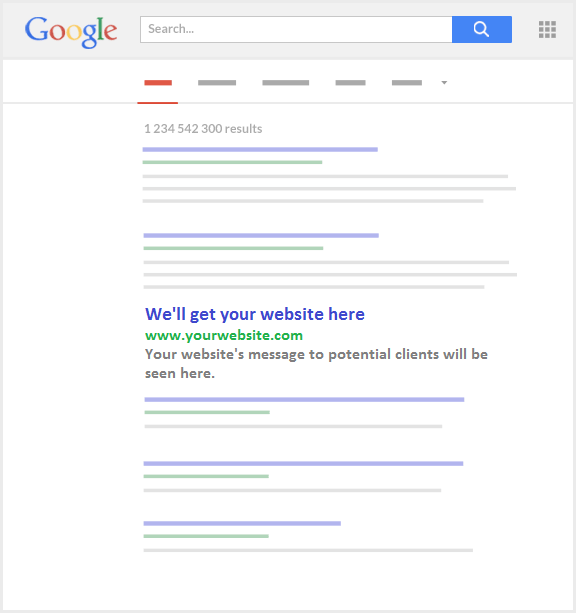What is Search Engine Optimization?
Search Engine Optimization (SEO) is a sub-set of an overall digital marketing strategy that involves ‘optimizing’ and improving your website’s visibility and position in a search engines organic results, which almost always invariably leads to increased traffic to your website.
As the agency that hopes to handle the digital marketing and SEO campaigns for your law firm, our primary objective will be to increase the number of leads that your firm receives each month, and the main tactic we will use to achieve this, is by ensuring that over time, your website ranks as high as possible in the major search engines like Google and Bing, for as many relevant keywords. We will do this using a mix of various white-hat and ethical methods.
Overview of How We Rank
Your Law Firm’s Website
Some of the things we will be doing to ensure that we rank your website includes:
- Content development and marketing
- Internal and external link building
- Social media posts and signals
- Citation building (also helps with local SEO)
- Onsite website optimization
- Writing and publishing press releases.
- And more.
Our 5-Phase SEO Process
Once you on-board us to take over the digital marketing or SEO function for your law practice's website, we will follow a 5-step process to achieve the objective:
Phase 1: Business and Website Evaluation and Analysis.
We begin by getting to know who you are as a business. To that end we endeavor to get to know your company culture, your processes, your target audience, company challenges, objectives, and more.
After this, we then proceed to conduct an in-depth analysis of your website, taking note of things like site speed, meta tags, site structure and content, mobile friendliness, on-site and off-site optimization levels, broken links and much more.
Phase 2: Strategy Development.
Based off our findings from our evaluation of your business and website in phase 1, we then proceed to develop a customized plan to achieve your Key Performance Achievements (KPA's.)
Phase 3: Preparatory Setup.
In this phase, we begin to get all our tools ready for the task ahead, including dashboards, analysis tools, and more.
Phase 4: Execute.
At this stage, we begin to execute the plan we have developed to achieve the stated objectives.
Phase 5: Optimize and Monitor.
Here we begin to monitor the work we have done to date and see how close we are to hitting our target. This will involve optimizing things that are not working as well, or that could be doing better than it is.

